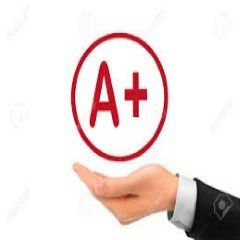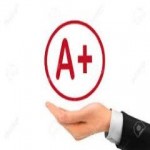Research Outline Instructions complete solution correct answer key
Research Outline Instructions complete solution correct answer key
You will individually research a topic on some aspect of professional communication. You will then prepare a 1–2 page outline using the standard outline format (shown below) that would be used in a training session. At the end of your outline you must include a complete reference list, properly formatted according to current APA format. You must use at least 5 appropriate sources to support the points you make in your outline. See below for clarification on appropriate sources for this assignment.
The Outline must be created in Microsoft Word and uploaded to Blackboard as a .doc or .docx file by 11:59 p.m. (ET) on Monday in Module/Week 4.
Outline Requirements:
· The outline must be your original work and written solely for this course.
· The sample outlines available below should be referred to for proper formatting.
· Arial or Times New Roman are the only acceptable fonts.
· Any information paraphrased or directly quoted from a source - whether a statement or idea - must be followed with a complete and properly formatted in-text citation (according to APA guidelines) directly following the statement/idea. In-text citations will show how and where your sources were used.
· Reference List
- Follow APA formatting guidelines
- In addition to current APA format for formatting your reference list, you are also required to include the perma link (also known as the URL or web address) for all full-text articles.
- A minimum of 5 different sources must be used.
- Two of the 5 sources must be full-text, peer-reviewed articles retrieved from Liberty University’s online journal database and must be from within the past 7 years.
- You may also use your course textbook as 1 source; no other textbooks, including e-books, may be used.
- The remaining sources must be full-text articles obtained from professional journals found on Liberty University’s online journal database.
- No general Internet searching is acceptable. Therefore, no blogs, education sites, commercial sites, Wikipedia, About.com, editorials, abstracts, online books, or book reviews are acceptable for this assignment.
Topic Ideas
The course textbook will be a great resource when looking for a topic that relates to some aspect of professional communication.
Some examples of topics include (but are not limited to):
- How to be an Effective Verbal and Nonverbal Communicator;
- How to Give an Effective Presentation;
- Effective Communication Within Teams;
- Overcoming Communication Barriers
It is recommended that you pick a topic and then do some research to make sure you can find 5 appropriate sources. Once you are certain you can locate 5 appropriate sources, begin creating your outline.
Example of Standard Outline
As you will see in the examples below, standard outline format has the following number/letter order: roman numerals, capital letters, numbers, lower case letters, etc..
You must always have more than 1 main point, meaning there must be (at least) a roman numeral I and a roman numeral II; in other words, you can’t just have a roman numeral I without having a roman numeral II. Also, if you have one sub point (“A”), you must have at least one other sub point ( “B”). The same applies to sub-sub points (“1”) and sub-sub- sub points (“a”), etc…. See below for clarification.
Note: Below you will find 2 SIMPLE ELEMENTARY EXAMPLES (as far as the content). These examples are meant to help you with understanding standard outline formatting and APA formatting. Your outline should contain more “substance”, as this is the “research” part of the research project : ).
EXAMPLE #1
Title of Presentation
I. First main point
A. First sub-point (in-text citation)[JLW1]
1. First sub-sub- point (in-text citation)
a. First sub-sub-sub point (in-text citation)
b. Second sub-sub-sub point (in-text citation)
c. Third sub-sub-sub point (in-text citation)
2. Second sub-sub- point (in-text citation)
3. Third sub-sub point (in-text citation)
B. Second sub-point (in-text citation)
1. First sub-sub- point (in-text citation)
2. Second sub-sub- point (in-text citation)
a. First sub-sub-sub point (in-text citation)
b. Second sub-sub-sub point (in-text citation)
II. Second main point
A. First sub-point (in-text citation)
1. First sub-sub- point (in-text citation)
a. First sub-sub-sub point (in-text citation)
b. Second sub-sub-sub point (in-text citation)
2. Second sub-sub- point (in-text citation)
3. Third sub-sub point (in-text citation)
B. Second sub-point (in-text citation)
1. First sub-sub- point (in-text citation)
a. First sub-sub-sub point (in-text citation)
b. Second sub-sub-sub point (in-text citation)
c. Third sub-sub-sub point (in-text citation)
2. Second sub-sub- point (in-text citation)
C. Third sub-point (in-text citation)
1. First sub-sub- point (in-text citation)
2. Second sub-point (in-text citation)
a. First sub-sub-sub point (in-text citation)
b. Second sub-sub-sub point (in-text citation)
III. Third main point
A. First sub-point (in-text citation)
1. First sub-sub- point (in-text citation)
2. Second sub-sub- point (in-text citation)
a. First sub-sub-sub point (in-text citation)
b. Second sub-sub-sub point (in-text citation)
3. Third sub-sub point (in-text citation)
B. Second sub-point (in-text citation)
1. First sub-sub- point (in-text citation)
a. First sub-sub-sub point (in-text citation)
b. Second sub-sub-sub point (in-text citation)
2. Second sub-sub- point (in-text citation)
a. First sub-sub-sub point (in-text citation)
b. Second sub-sub-sub point (in-text citation)
References[JLW2]
EXAMPLE #2
Description of Fruit[JLW3]
I. Red
A. Strawberries
1. They are “Juicy” (Smith, 2006, p. 3)
2. Extremely “Delicious[JLW4] ” (Doe, 2010, p. 20)
B. Apples[JLW5]
1. Tart apples are my favorite (Rost, 2010)
2. “Sweet” apples are good for baking pies (Rost, 2010, p. 30)
C. Watermelon
1. “Juicy” (Smith, 2006, p. 3)
2. “Delicious” (Doe, 2010, p. 20)
3. Sweet (Rost, 2010)
D. Raspberries
1. “Juicy” (Smith, 2006, p. 3)
2. “Delicious” (Doe, 2010, p. 20)
II. Green[JLW6]
A. Grapes
1. Round (Alster, 2011)
2. Oval (Alster, 2011)
3. Seedless (Alster, 2011)
4. Seeded (Alster, 2011)
B. Kiwi
1. “Seeded” (Smart, 2005, p. 15)
2. “Juicy” (Smart, 2005, p. 15)
C. Honeydew
1. “Melon” (Smart, 2011, p. 15)
2. “Sweet” (Smart, 2011, p. 15)
III. Orange
A. Orange (Fuller, 2008)
B. Cantaloupe
1. Melon (Rost, 2010)
2. “Seeded” (Rost, 2010, p. 34)
IV. Yellow
A. Bananas
1. Yummy
2. Contain potassium
B. Pears
1. Seeded (Rost, 2010)
2. Yummy
3. Grainy
4. Never saw a yellow pear (Rost, 2010)
V. Purple
A. Grapes
1. “Seeded” (Doe, 2010, p. 20)
2. “sweet” (Doe, 2010, p. 30)
3. unseeded (Doe, 2010)
B. Plums
1. “Pitted” (Rost, 2010, p. 55)
2. Yummy
3. Purple
4. Sweet
References[JLW7]
Alster, P. (2011). Grapes are great: You should try them. Fruit Journal 34(1), 30-45.
Retrieved from http://…..scope=site[JLW8]
Doe, R. (2010). Delicious strawberries. Journal of fruit 3(14), 10-25. Retrieved from
http://…..scope=site
Fuller, C. (2009). Oranges are round: Get them fresh. Journal of Edibles 2(15), 2-5.
Retrieved from http://…..scope=site
Rost, L. (2010). Melons are wonderful. Journal of Melons. 7(1), 32-45. Retrieved
from http://…..scope=site
Smart, B. (2011). Sweet melons. Journal of Melons. 2(10), 10-20. Retrieved from
http://…..scope=site
Smith, J. (2008). Strawberries are yummy. Journal of fruit. 1(12), 2-7. Retrieved from http://…..scope=site
**Don’t forget to see the grading rubric for this assignment before you begin creating your outline.
Format your in-text citations according to APA guidelines, current edition…see examples below.
Although there does not necessary need to be an in-text citation after every statement, each source must be used. In addition, according to APA guidelines, if you use any idea/statement from a source – whether paraphrased or directly quoted – it must be followed with a complete and properly formatted in-text citation; this is necessary to avoid plagiarizing and provide necessary credit to the author(s)/source for the information you used.
Format all sources used in your outline above according to APA guidelines, current edition….See examples below.
Take note that the grading rubric states “Used at least five appropriate sources”; In order to receive credit for each source, you must have at least one in-text citation within the body of your outline for each source. Typically there will be more than one in-text citation per source; however, you must have at least one : ).
[JLW3] [JLW3]Please note that this is just a “simple” elementary example, and it’s meant to help you with standard outline formatting. Although you should not include complete sentences or paragraphs in an outline, your outline should offer more substance than this example. As stated above, this is the “meat” of your Research Project. Your outline (not including the references) should be at least 1 full page.
Let me know if you have specific questions before you submit your work.
[JLW4]Since I have a sub-sub point (1. They are Juicy), I must have at least a second sub-sub point (2. Extremely Delicious)
[JLW5]Since I have a sub point (A. Strawberries), I must have at least a second sub point (B. Apples)
[JLW6]Since I have a main point (I. Red) above, I must have at least a second main point (II. Green)
[JLW7]These sources are made up; they are solely for the purpose of providing an example of how you format journal articles according to APA, current ed. guidelines.
· Alphabetize the list by author’s last name (or title if there is no author)
· Notice that you must include the publisher’s date after the author(s)
· Notice you only include the first initial of the author(s) first name; do not include the full first name of the author.
· Notice the capitalization rule for the article titles
· Notice the journal name and volume # are italicized
· Notice the formatting of the volume, issue, and page #s; you don’t include the words “volume”, “issue”, “or “pg.”
· Notice that you must include a link that will take your reader directly to the full text article within Liberty’s online journal database.
Remember that you can only used approved sources (as listed on the instructions), and you must have at least five approved sources.
[JLW8]Include the entire link that will take your reader directly to the full-text article within Liberty’s journal database
Research Outline Instructions complete solution correct answer key
How to be an Effective Verbal and Nonverbal Communicator I. To be an effective communicator, one needs to pay attention to both the verbal and nonverbal aspects of communication. A. The importance of nonverbal gestures and facial expressions has been highlighted by research as an important part of communication. 1. Effective leaders use nonverbal aspects of communication effectively to influence their audiences (Talley & Temple, 2013). 2. Apart from the verbal content of the speech, communicators use their facial expressions and gestures to create the required effect on the audience (Talley & Temple, 2013). B. Effective communication is required for every relationship, even in case of the professional relationships. 1. Interpersonal communication is an important part of one’s daily communication requiring us to make use of appropriate gestures for communicating impressively (Cant & Aroni, 2008). 2. Cant and Aroni (2008) have highlighted, “Interpersonal communication competence is an important skill for dietitians because it is the main method by which they conduct their practice” (p. 503). II. Persuasion is an art that requires us to master the nonverbal aspects of communication. A. Appropriate body language is important fo...




Online Users
-
 Askwilliam
Today
Askwilliam
Today





A+ - Thank you!
Thanks for the positive feedback!